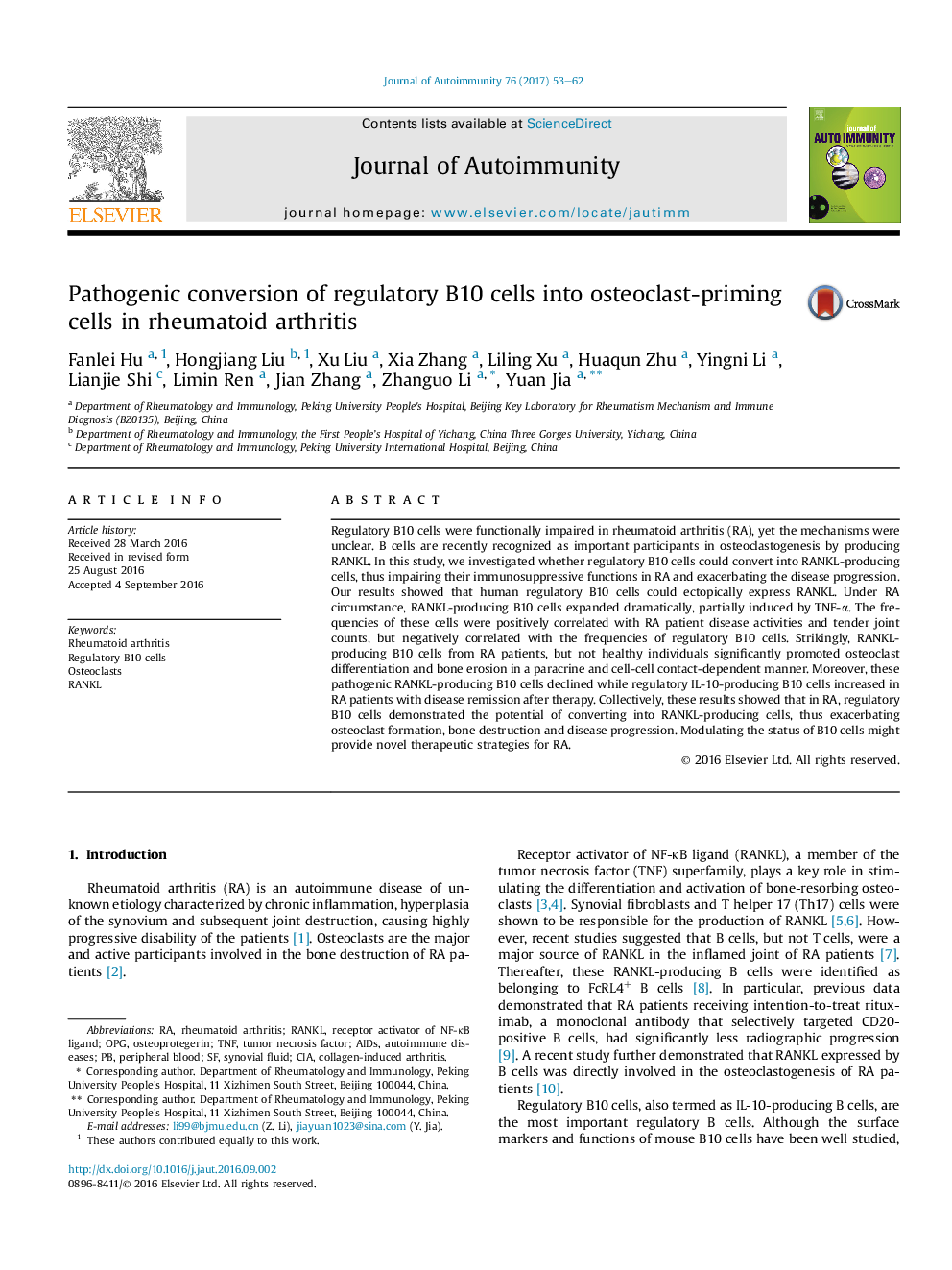| Article ID | Journal | Published Year | Pages | File Type |
|---|---|---|---|---|
| 5667932 | Journal of Autoimmunity | 2017 | 10 Pages |
â¢Regulatory B10 cells were functionally impaired in RA patients .â¢Under RA circumstance, regulatory B10 cells demonstrated the potential of converting into RANKL-producing cells .â¢RANKL-producing B10 cells expanded dramatically in RA patients and were positively correlated with the disease activities .â¢RANKL-producing B10 cells from RA patients significantly promoted osteoclast differentiation and bone erosion .â¢RANKL-producing B10 cells declined while regulatory B10 cells increased in RA patients with remission after therapy .
Regulatory B10 cells were functionally impaired in rheumatoid arthritis (RA), yet the mechanisms were unclear. B cells are recently recognized as important participants in osteoclastogenesis by producing RANKL. In this study, we investigated whether regulatory B10 cells could convert into RANKL-producing cells, thus impairing their immunosuppressive functions in RA and exacerbating the disease progression. Our results showed that human regulatory B10 cells could ectopically express RANKL. Under RA circumstance, RANKL-producing B10 cells expanded dramatically, partially induced by TNF-α. The frequencies of these cells were positively correlated with RA patient disease activities and tender joint counts, but negatively correlated with the frequencies of regulatory B10 cells. Strikingly, RANKL-producing B10 cells from RA patients, but not healthy individuals significantly promoted osteoclast differentiation and bone erosion in a paracrine and cell-cell contact-dependent manner. Moreover, these pathogenic RANKL-producing B10 cells declined while regulatory IL-10-producing B10 cells increased in RA patients with disease remission after therapy. Collectively, these results showed that in RA, regulatory B10 cells demonstrated the potential of converting into RANKL-producing cells, thus exacerbating osteoclast formation, bone destruction and disease progression. Modulating the status of B10 cells might provide novel therapeutic strategies for RA.
